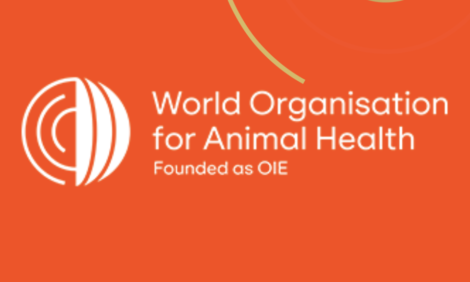



Caution Advised over Use of Cobalt in Feed
EU - The FEEDAP Panel of the European Food Safety Authority (EFSA) has recommended modifying the authorisation of cobalt compounds in feedstuffs on the grounds worker safety.According to Regulation (EC) No 790/2009 amending Regulation (EC) No 1272/2008, cobalt dichloride and cobalt sulphate are of low acute toxicity (category 4) but are classified as respiratory and skin sensitisers (category 1), as acute and chronic toxicants to the aquatic environment (category 1) and as presumed human carcinogens by the inhalatory route (class 1B). Cobalt(II) cations are also considered genotoxic under in vitro and in vivo conditions.
THe EFSA report explains that, in the light of the above properties of cobalt and since several cobalt compounds are authorised by EU legislation as feed additives, a risk assessment of the use of cobalt compounds in animal nutrition was undertaken considering:
- the necessity of cobalt supplementation for the target species including potential adverse effects of minimising/withdrawing cobalt supplementation on animal health
- the safety for consumers of foods from animals treated with cobalt salts, and
- the safety of persons handling cobalt compounds as feed additives.
Monogastric animals (excluding horses and rabbits) do not require cobalt but they require vitamin B12. Consequently, there is no need for any cobalt supplementation to their feed.
The ruminal microflora can synthesize vitamin B12, provided dietary cobalt is available in sufficient quantities. Consequently, the vitamin B12 requirement of these animals can be covered by dietary Cobalt. The organism of ruminants also requires only vitamin B12. But for a potential replacement of cobalt by vitamin B12, there are not enough data to evaluate the consequences on health and performance for these species under field conditions. Such a replacement is also considered inefficient because of the high ruminal degradation rate of oral vitamin B12. A withdrawal of cobalt (supplementation) from the diet would also affect ruminal microbiota, its composition and function. Some small beneficial effects observed in ruminants after cobalt supply are likely to be related to an unspecific cobalt effect on the microbiota rather than to vitamin B12. An optimal micronutrient supply of ruminants would therefore include cobalt. A comparable conclusion may be drawn for horses and coprophagous rabbits (hindgut fermentation of vitamin B12), although there is a lack of quantitative data.
The Panel on Additives and Products or Substances used in Animal Feed (FEEDAP) concluded that the potential cobalt supplementation to diets for ruminants, horses and rabbits should be maintained. A cobalt supplementation of 0.3 mg/kg dry matter and, taking into account cobalt background concentrations of feed material not exceeding 0.5 mg/kg dry matter of complete feed, a maximum content of 1mg Co per kg complete feed, is considered appropriate. For fish diets, the existing maximum content of 2mg Co per kg complete feed should be maintained due to the higher background levels of Co in fish meal, a major part of fish diets.
The tolerance of ruminants to cobalt is very high and greatly in excess of the requirements. Therefore, it is considered unlikely that cobalt toxicity in target animals could be a major problem in practice.
Among foodstuffs of animal origin, offal shows the highest cobalt content, liver with about 0.02-0.07 mg/kg fresh weight (FW), followed by kidney with about 0.001-0.01 mg per kg FW. Meat is in the range of 0.001-0.02 mg/kg FW as are fillets of freshwater fish. Milk and eggs contain about 0.004-0.005 mg Co per kg; dairy products like cheese and butter are relatively rich in cobalt (0.02 mg per kg FW).
Virtually all cobalt in offal and beef meat can be attributed to vitamin B12. The fraction of vitamin B12-bound cobalt is considerably smaller in poultry and pork meat (about 20 to 40 per cent) indicating dietary supply of cobalt as such. Eggs and milk contain even higher amounts of vitamin B12 unrelated cobalt (about 70 and 95 per cent, respectively) indicating excretion of absorbed soluble cobalt. However, these are estimates with several uncertainties due to methodological reasons, e.g. poor data set, analytical methods.
No data are available in the open literature on the potential carcinogenicity of cobalt following the exposure via the oral route either in humans or in experimental animals. The exposure to cobalt via the oral route may potentially entail a number of adverse in effects in humans (cardiac effects, effects on erythropoiesis, effects on thyroid, developmental effects and allergic dermatitis).
A daily oral intake of 600µg Co (based on a LOAEL of 1mg per kg for polycythaemia) appears a minimum risk level for humans that would protect from the known threshold-related adverse effects.
The estimated population average intake of cobalt was reported to be 0.12 mg per day in the UK, 0.005 to 0.04 mg Co per day in the US, 0.011 mg Co per day in Canada, and 0.029 mg Co per day in France. All these intake values are quite below the oral threshold of 600µg per person.
The FEEDAP Panel, based on its own calculations, concluded that the potential cobalt intake of consumers from food of animal origin would not exceed 14µg per day and is therefore not of safety concern.
Users are exposed to cobalt compounds (dichloride and sulphate are skin and respiratory sensitisers and carcinogenic by inhalatory route). For pulmonary effects, the Agency for Toxic Substances and Disease Registry (ATSDR) has developed a minimum risk level of 0.1 µ Co per cubic metre of air. At present, no data on dusting potential of the authorised cobalt compounds have been available to the FEEDAP Panel. During re-evaluation of cobalt compounds, the dusting potential of cobalt additives deserves particular attention.
Since the contact of persons handling the additive cannot be fully avoided, the FEEDAP Panel recommends, as a first step, minimising exposure to cobalt compounds.
The FEEDAP Panel also recommends modifying the authorisation of cobalt compounds in feedstuffs by:
- restricting the use of cobalt compounds as additives to feed for ruminants (except milk replacer), horses and rabbits,
- limiting cobalt supplementation in feed for ruminants (except milk replacer), horses and rabbits to a maximum of 0.3 mg Co/kg complete feed, and
- reducing the authorised maximum cobalt content from all sources from 2 to 1 mg/kg complete feed for all species except fish.
No negative consequences of these measures on animal health and the efficiency of animal production are expected.









